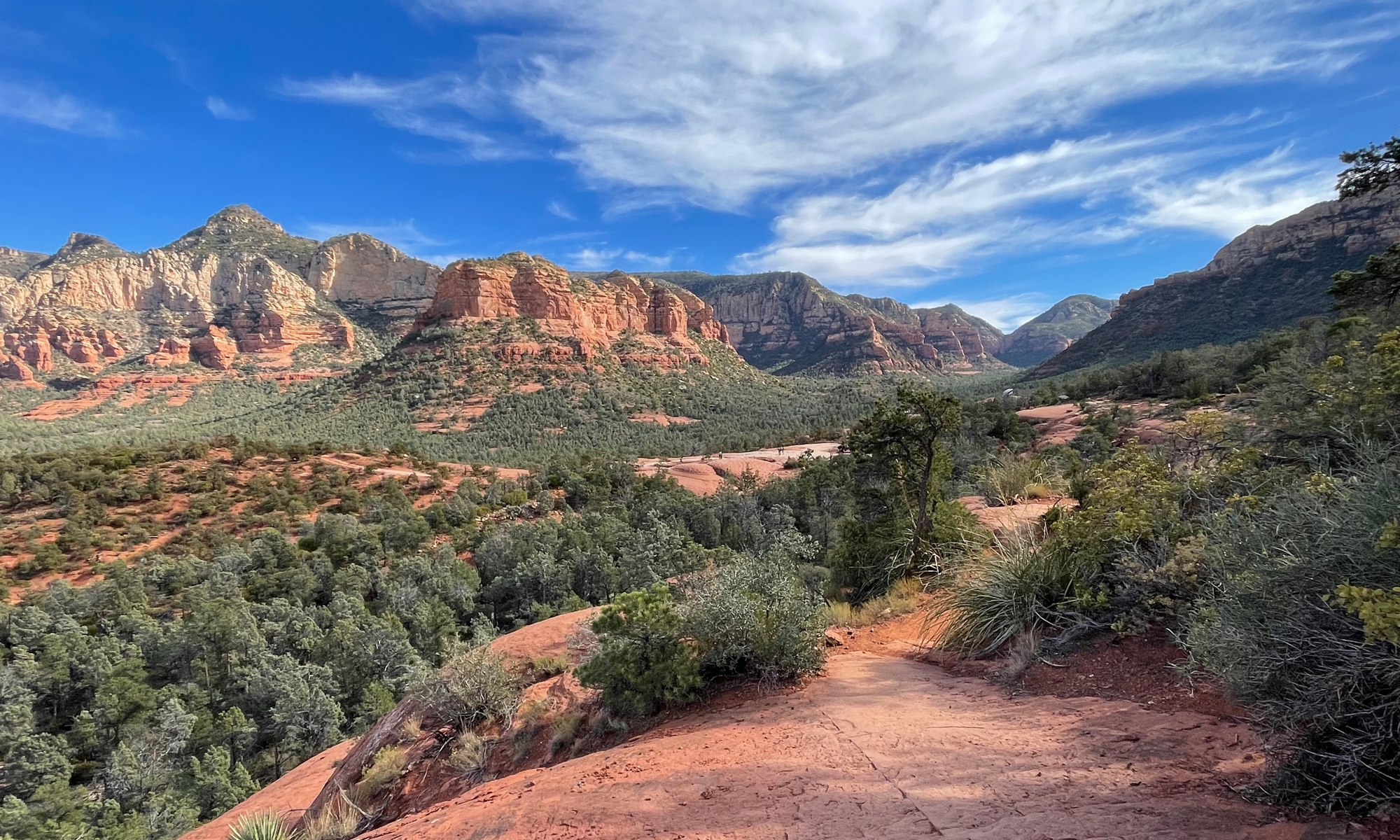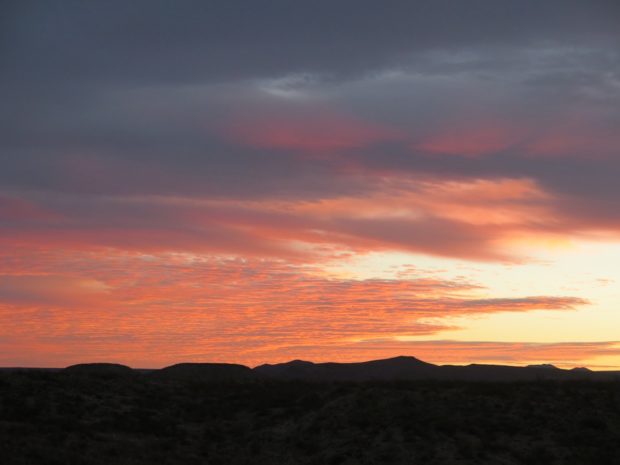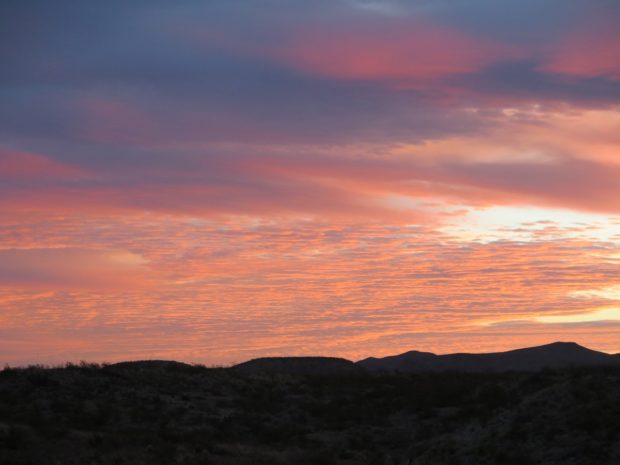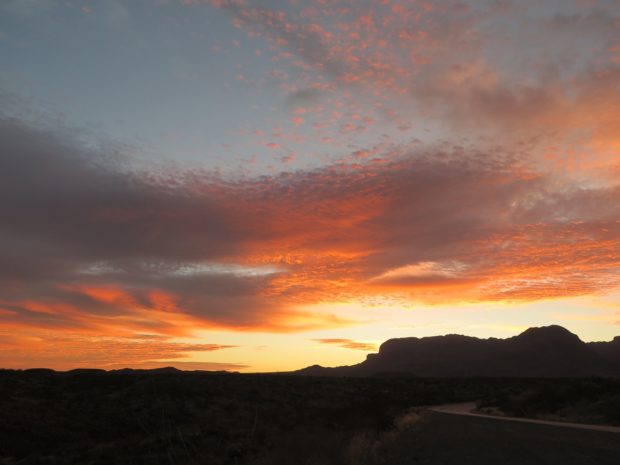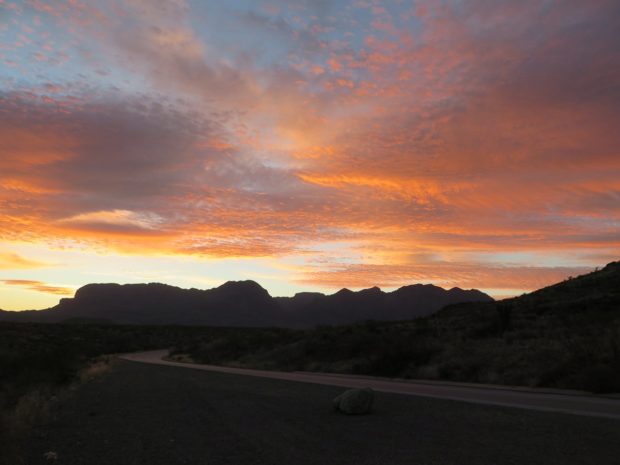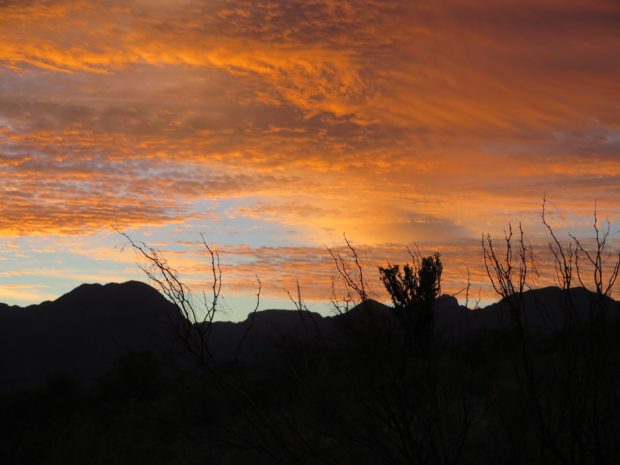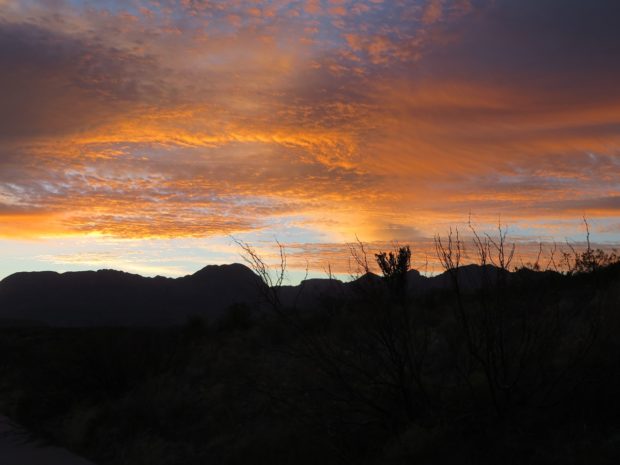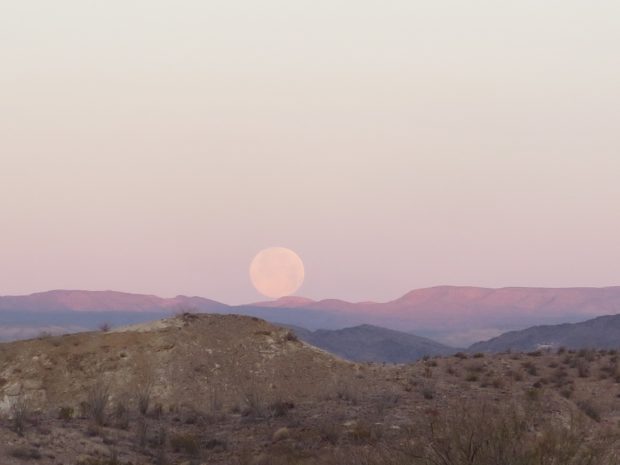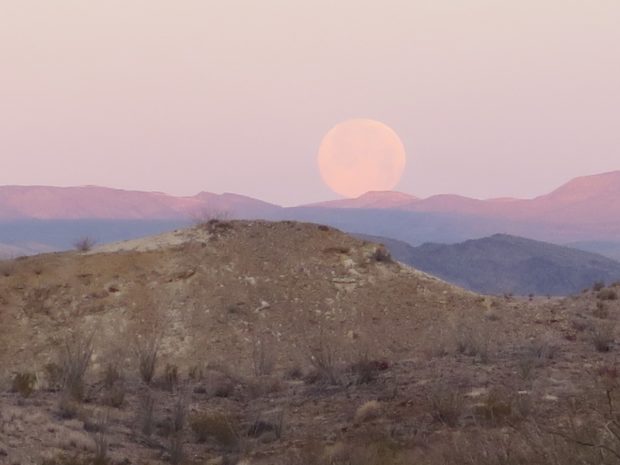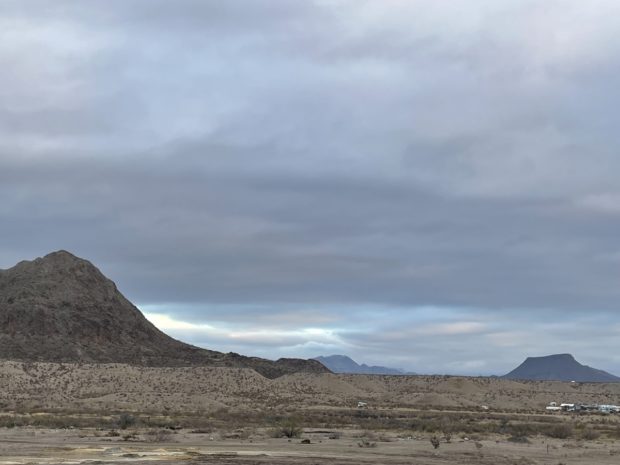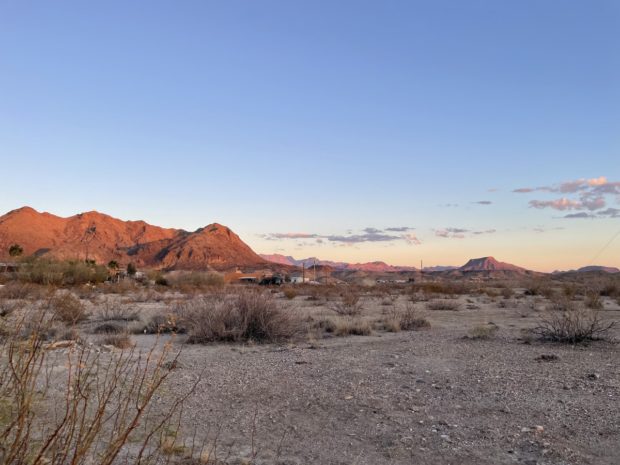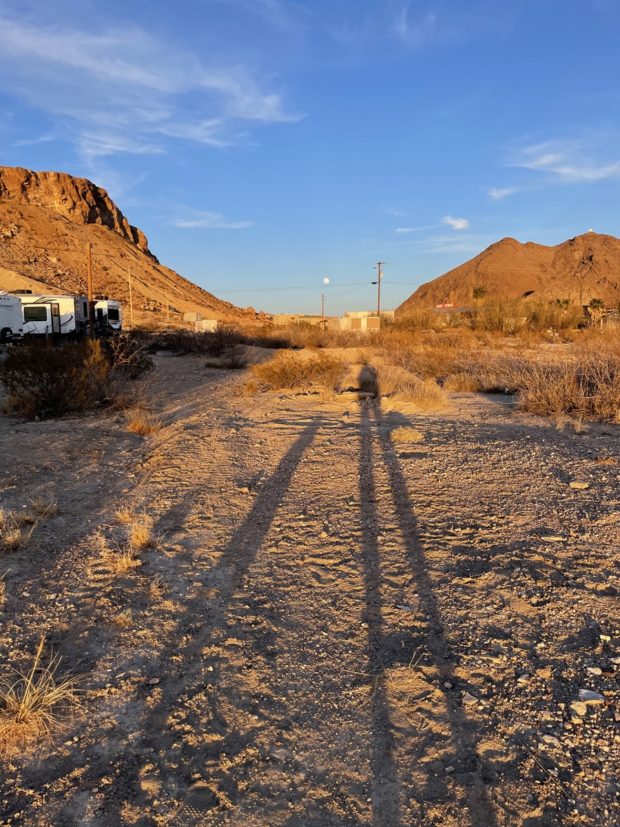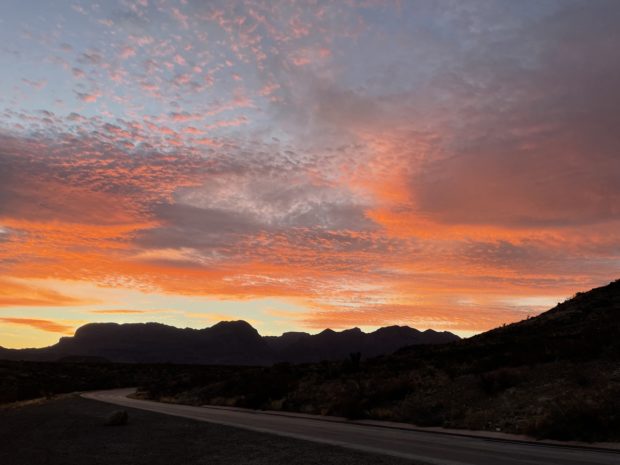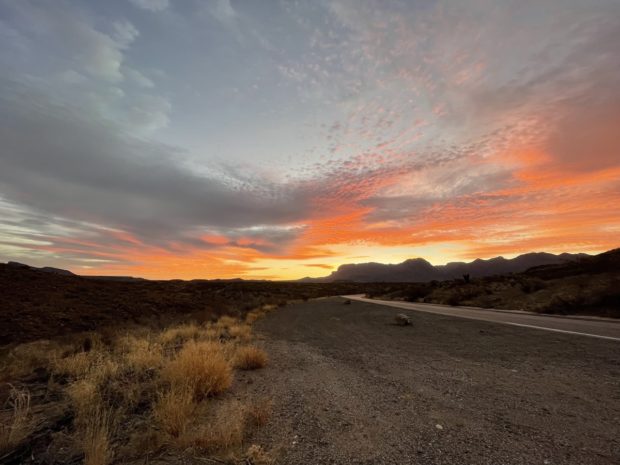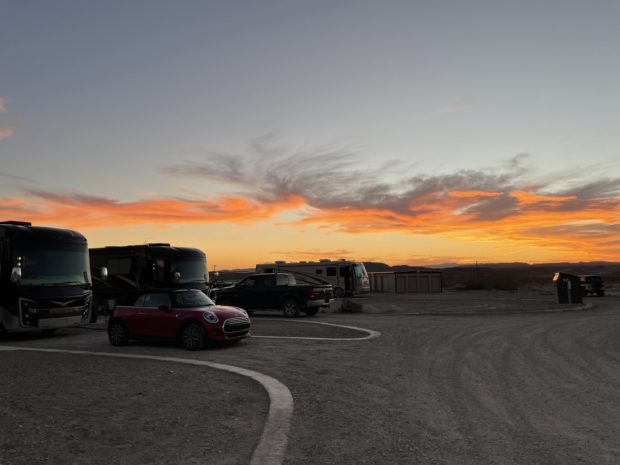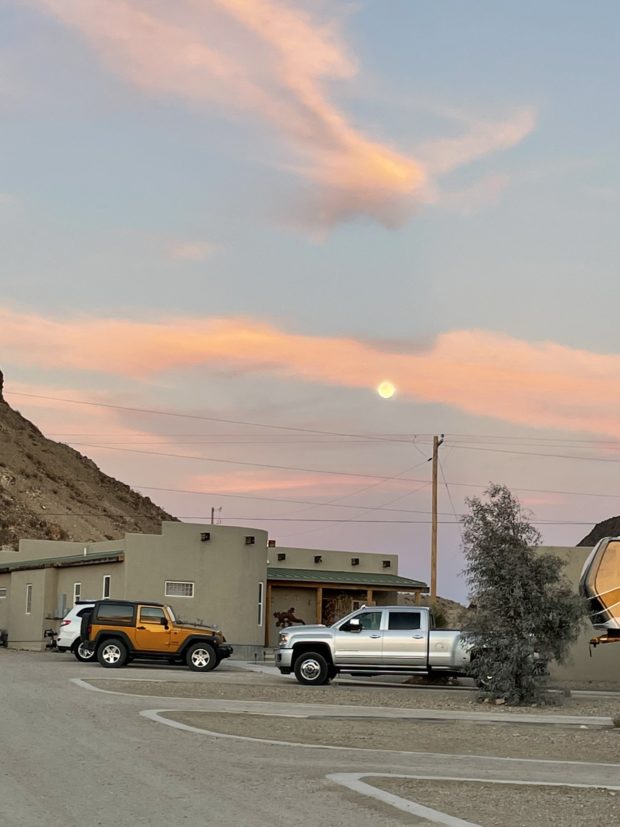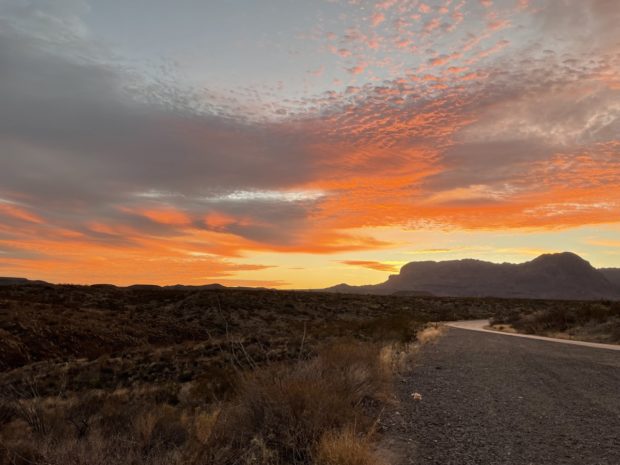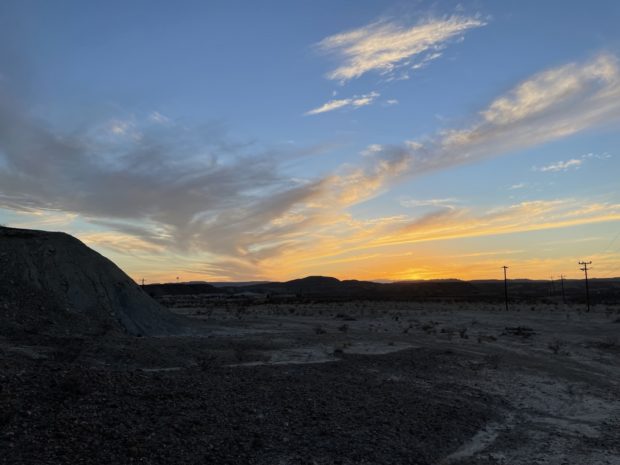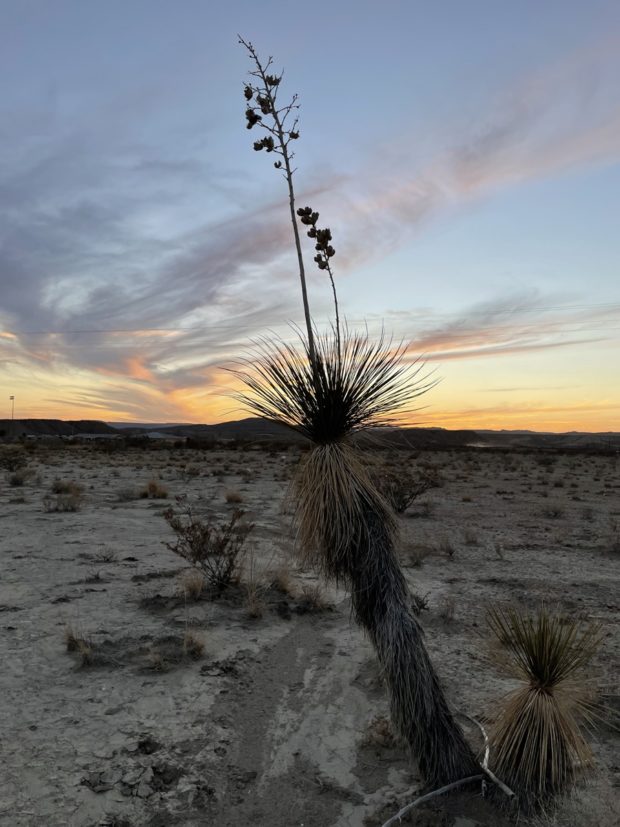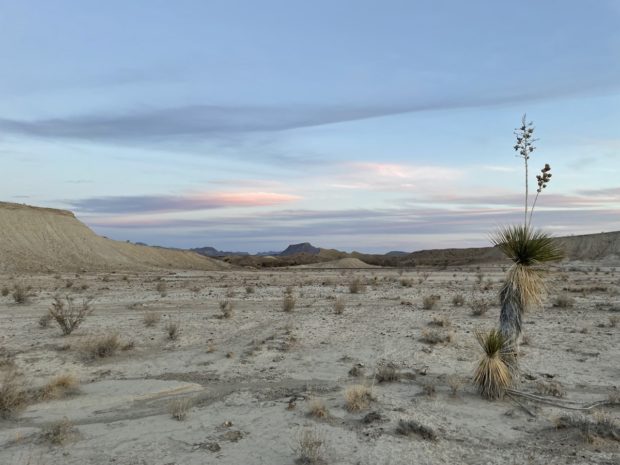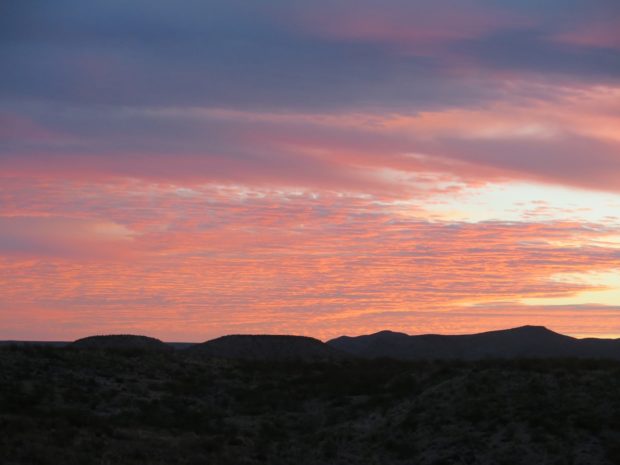I have just above zero motivation to use my computer these days. I think I am still recovering from the trauma of my last job! Funny, not funny.
Anyway… the coolest thing about our camping spot in Terlingua, Texas, just outside the Maverick Junction entrance to Big Bend National Park (BBNP), was that we had a pretty good 360 degree view of the sky. So we could see moonrises and sunrises as well as moonsets and sunsets. It was pretty awesome.
The next two images are moonsets.
Terlingua is a great jumping-off spot for visiting BBNP. If you decide to visit BBNP and don’t have an RV, or have a small RV or tent, look for lodging at the Chisos Mountain Lodge or Campground. You will not be disappointed.
